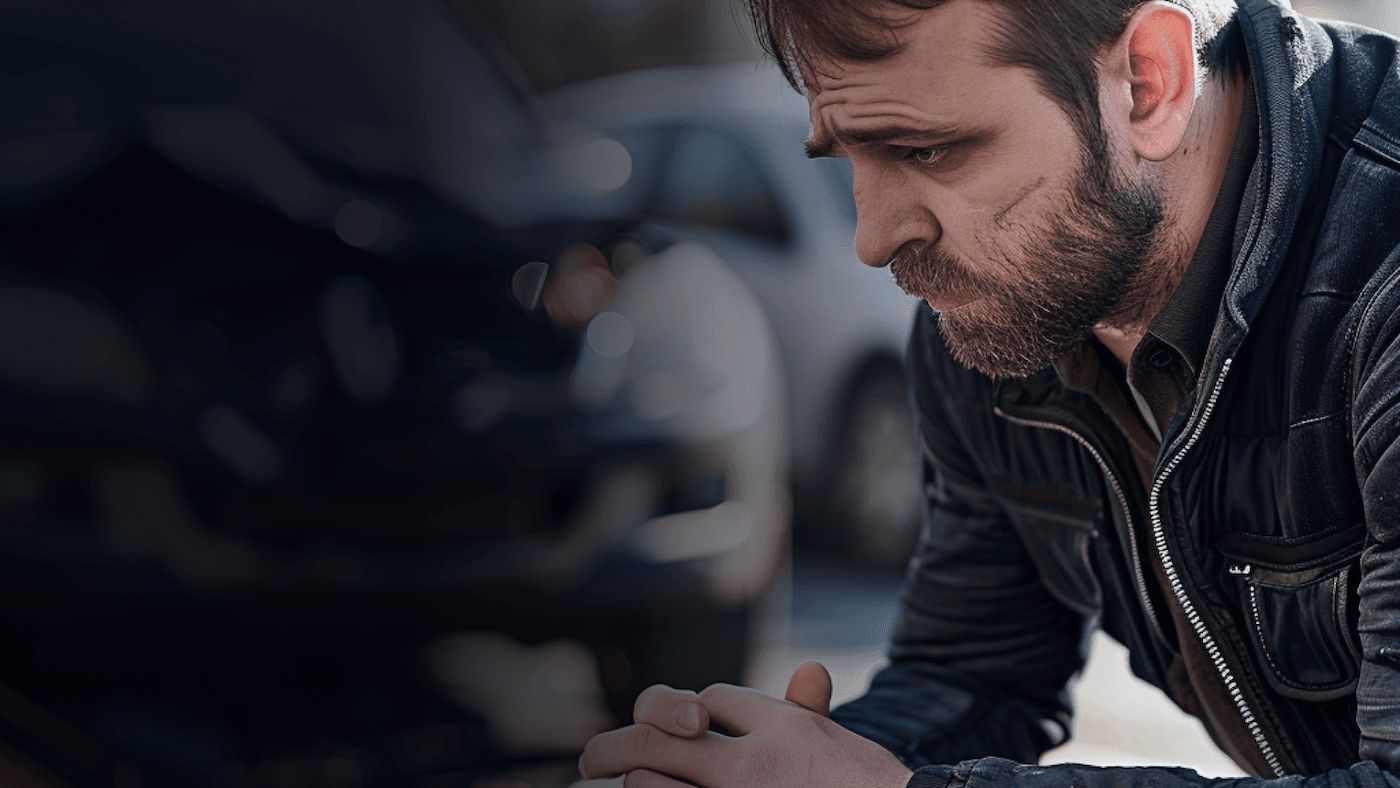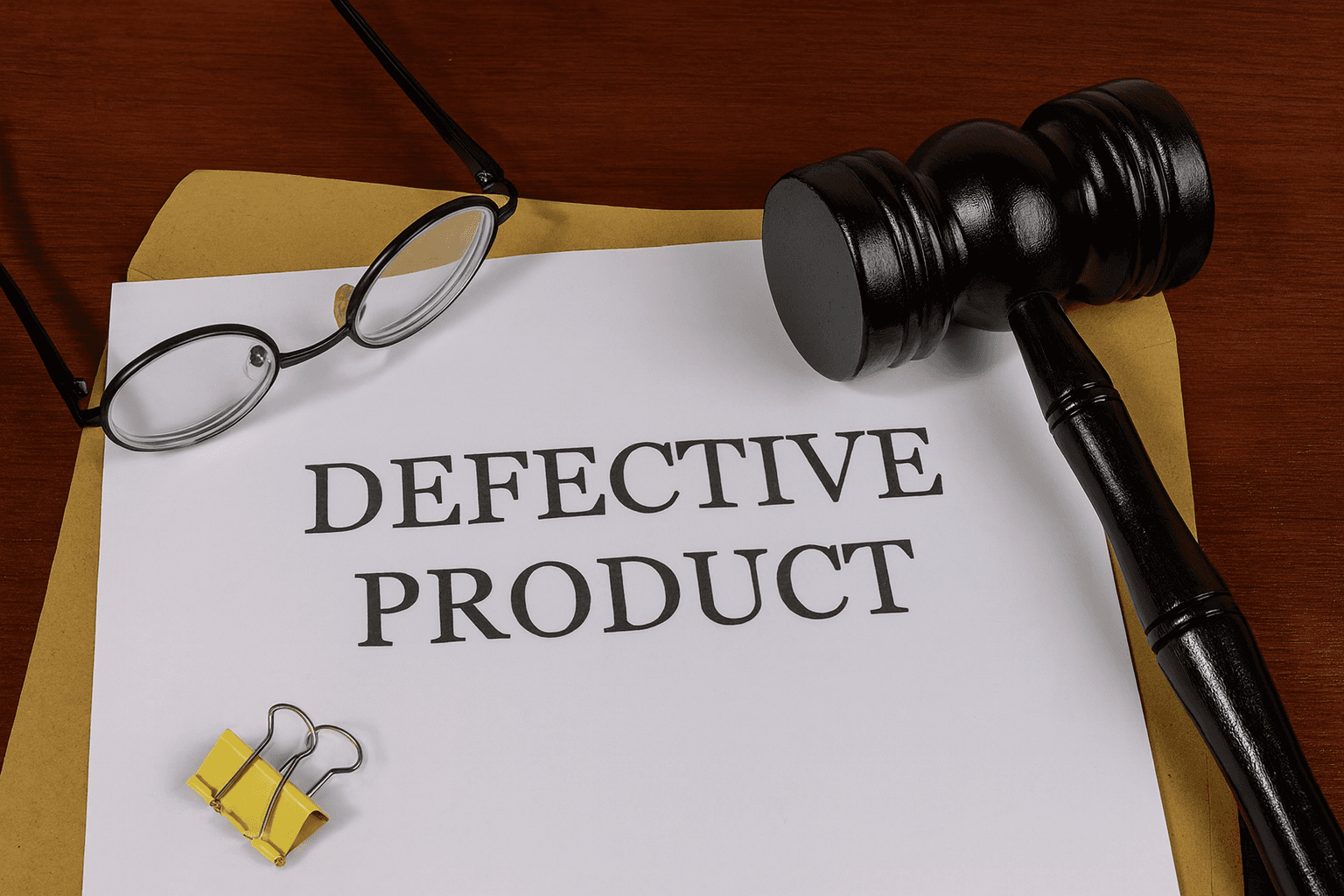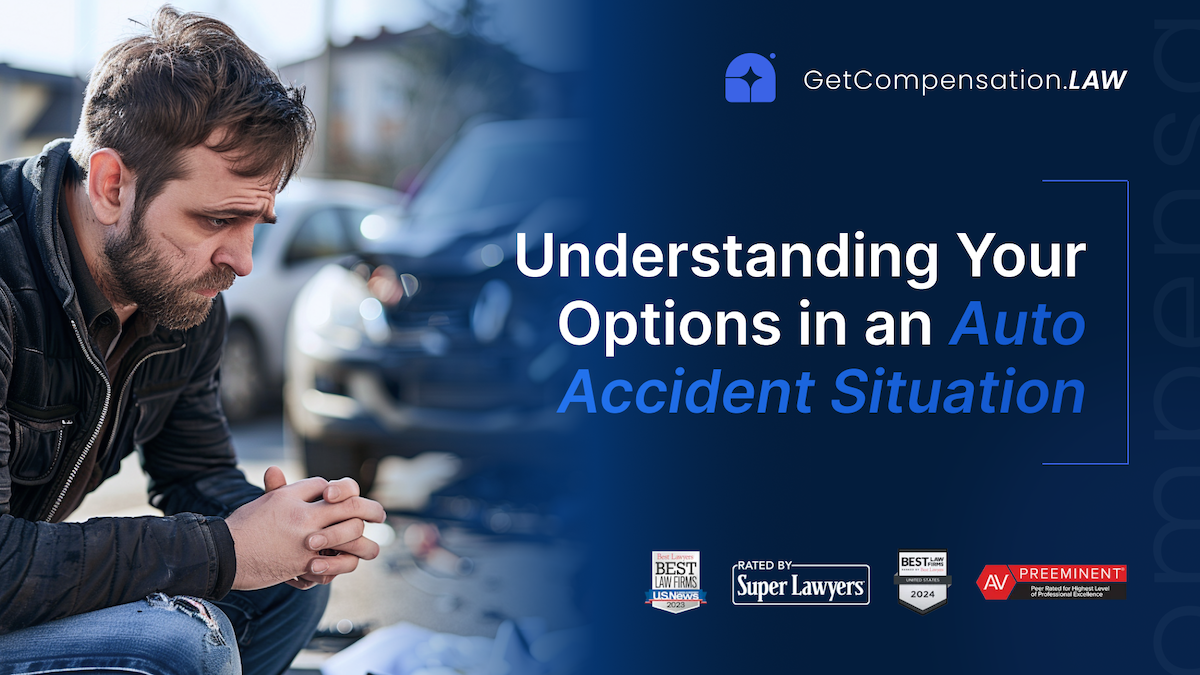
Defective Products and Dangerous Goods: Who’s Liable When Consumers Get Hurt
Discover who’s responsible when defective products cause injury or loss. Learn about your consumer rights, legal options, and how to take action for justice.
Our Network of Attorneys Are Recognized by the Best
When consumers buy a product — whether it’s a car, a kitchen appliance, or baby formula — they expect it to be safe. Unfortunately, not all products meet that expectation. Across the U.S., defective or dangerous goods injure or kill thousands of people each year.
From malfunctioning electronics to contaminated baby food and toxic chemicals in household products, corporate negligence continues to endanger consumers. When this happens, it’s not just a malfunction — it’s a violation of public trust.
At GetCompensation.law, we believe that no consumer should pay the price for a company’s carelessness. Our network of nationally recognized attorneys fights for justice, holding corporations accountable and securing compensation for victims of unsafe products.
What Makes a Product “Defective”?
Under U.S. law, a product is considered defective if it’s unreasonably dangerous when used as intended. There are three main types of product defects:
- Design Defects:
The flaw exists in the product’s concept itself. For instance, a car model with a high risk of flipping over or a children’s toy small enough to cause choking. - Manufacturing Defects:
Something went wrong during production — perhaps poor quality control, contamination, or substandard materials. - Marketing Defects:
These involve inadequate instructions, missing safety warnings, or deceptive claims that make consumers unaware of potential risks.
Each defect type can have devastating consequences — injuries, fires, poisoning, or long-term illnesses.
Understanding Who’s Liable
When an unsafe product causes harm, liability doesn’t fall on just one entity. Multiple parties along the production and distribution chain can share responsibility.
This includes:
- Manufacturers, who create or assemble the product.
- Distributors, who move the product through the supply chain.
- Retailers, who sell directly to consumers.
- Marketers or advertisers, who make misleading safety claims.
The complexity of these relationships often requires legal expertise to identify where negligence occurred. Who is liable for defective products unpacking responsibility in product liability claims, determining accountability involves examining every link in the product’s life cycle — from design to sale.
That’s why working with an experienced attorney is essential. They know how to trace liability, gather evidence, and prove negligence in court.
Real-World Examples of Defective Products
Product defects can appear in nearly any industry, but certain types of products frequently cause serious harm:
- Automobiles: Defective airbags, brake systems, or engines leading to accidents.
- Home appliances: Faulty wiring or overheating components causing fires.
- Food and baby products: Contaminated formulas and unsafe ingredients linked to illness.
- Medical devices: Faulty implants or equipment that fail to function safely.
- Household goods: Toxic chemicals in cleaning agents or cookware.
Recent cases such as NEC lawsuits advocating for safer products and better medical care demonstrate the tragic consequences of product failure — in that case, contaminated baby formula linked to necrotizing enterocolitis in premature infants. These incidents underline why product safety is not optional — it’s a moral and legal duty.
The Legal Foundation for Product Liability
Product liability is based on one principle: corporations are responsible for ensuring the safety of what they sell.
Victims don’t need to prove intent — only that the product was defective and caused harm when used reasonably. Common legal grounds include:
- Negligence: The company failed to take proper care during design or production.
- Strict liability: The manufacturer is automatically responsible for defects, even without proven negligence.
- Breach of warranty: The product didn’t perform as promised under express or implied guarantees.
Courts also consider whether the company provided sufficient warnings or instructions. If not, the manufacturer may face additional penalties for failing to inform consumers of foreseeable risks.

Financial and Emotional Consequences for Victims
The cost of a defective product can extend far beyond physical injury. Victims often face:
- Medical bills for treatment, hospitalization, or rehabilitation.
- Lost income due to inability to work.
- Property damage (e.g., fires, flooding, or contamination).
- Emotional trauma — including anxiety, fear, and PTSD.
When the harm is severe or widespread, victims can pursue class action lawsuits to collectively demand justice and force corporations to implement safety reforms.
The Link Between Product Defects and Consumer Rights
Consumer protection laws provide a safety net for victims of defective or deceptive products. Federal agencies like the Consumer Product Safety Commission (CPSC) and Federal Trade Commission (FTC) regulate product standards, recalls, and advertising practices.
But financial and credit-related harms also fall under protection. For example, if a defective product purchase leads to debt collection disputes or unfair financial reporting, you may have rights under the consumer rights under the Fair Debt Collection Practices Act (FDCPA) — which prohibits harassment, deception, or abusive collection efforts.
Together, these laws ensure that corporations can’t escape accountability, even when financial institutions or third-party collectors become involved.
E-Commerce and Defective Products
Online shopping has transformed how we buy — but it has also complicated how we seek justice. Many defective or counterfeit products are sold through third-party vendors on major platforms.
That’s where understanding navigating consumer rights in e-commerce returns and refunds becomes critical. Even if you bought a product through an online marketplace, you still have legal rights to refunds, replacements, or compensation.
Courts increasingly hold online platforms responsible for allowing unsafe or mislabeled products to reach consumers. If a digital retailer fails to vet sellers or misrepresents product safety, they may share liability under consumer protection laws.
How to Prove Your Product Liability Case
Building a strong claim requires detailed evidence. Here’s how to prepare:
- Preserve the product: Do not discard or alter it. It may serve as key physical evidence.
- Document your injuries: Take photos, save medical records, and note all symptoms.
- Keep purchase records: Receipts, warranties, and product registration forms strengthen your claim.
- Gather communications: Emails or messages with sellers or manufacturers can reveal negligence or awareness of the defect.
- Work with experts: Attorneys often bring in engineers, scientists, or medical professionals to prove how and why the defect caused harm.
The success of your case depends on demonstrating three things: the product was defective, you used it as intended, and it directly caused your injury or loss.
When to Seek Legal Help
Even minor injuries can signal broader product safety issues affecting others. If you’ve been harmed by a product, you may be eligible for:
- Compensation for medical expenses and lost wages.
- Reimbursement for property damage.
- Damages for emotional suffering.
- Punitive damages — financial penalties meant to punish reckless corporations.
An experienced attorney can identify whether you should file an individual lawsuit or join a broader class action.
At GetCompensation.law, our network includes lawyers who specialize in both individual and collective litigation. They’ve fought — and won — against major manufacturers, distributors, and retailers across the U.S.
Preventing Future Harm
Consumers can’t control every corporate decision, but they can stay vigilant:
- Research brands before purchasing.
- Register products for recall alerts.
- Report defects to the CPSC.
- Avoid products with vague safety labels or missing documentation.
- Stay informed through reputable consumer watchdogs and safety databases.
Consumer awareness drives accountability — and every report or lawsuit helps build safer markets for everyone.
GetCompensation.law: Protecting Consumers, Enforcing Justice
When corporations fail to protect consumers, GetCompensation.law steps in. We connect victims with elite trial attorneys who specialize in product liability and consumer protection — attorneys recognized by Super Lawyers for their excellence and integrity.
Whether you’re facing injury from a defective product, a denied refund from an online seller, or emotional trauma from a dangerous consumer good, we’ll fight to hold those responsible accountable.
Your voice matters — and your rights are worth defending. Because justice shouldn’t depend on corporate goodwill — it should be the law.




